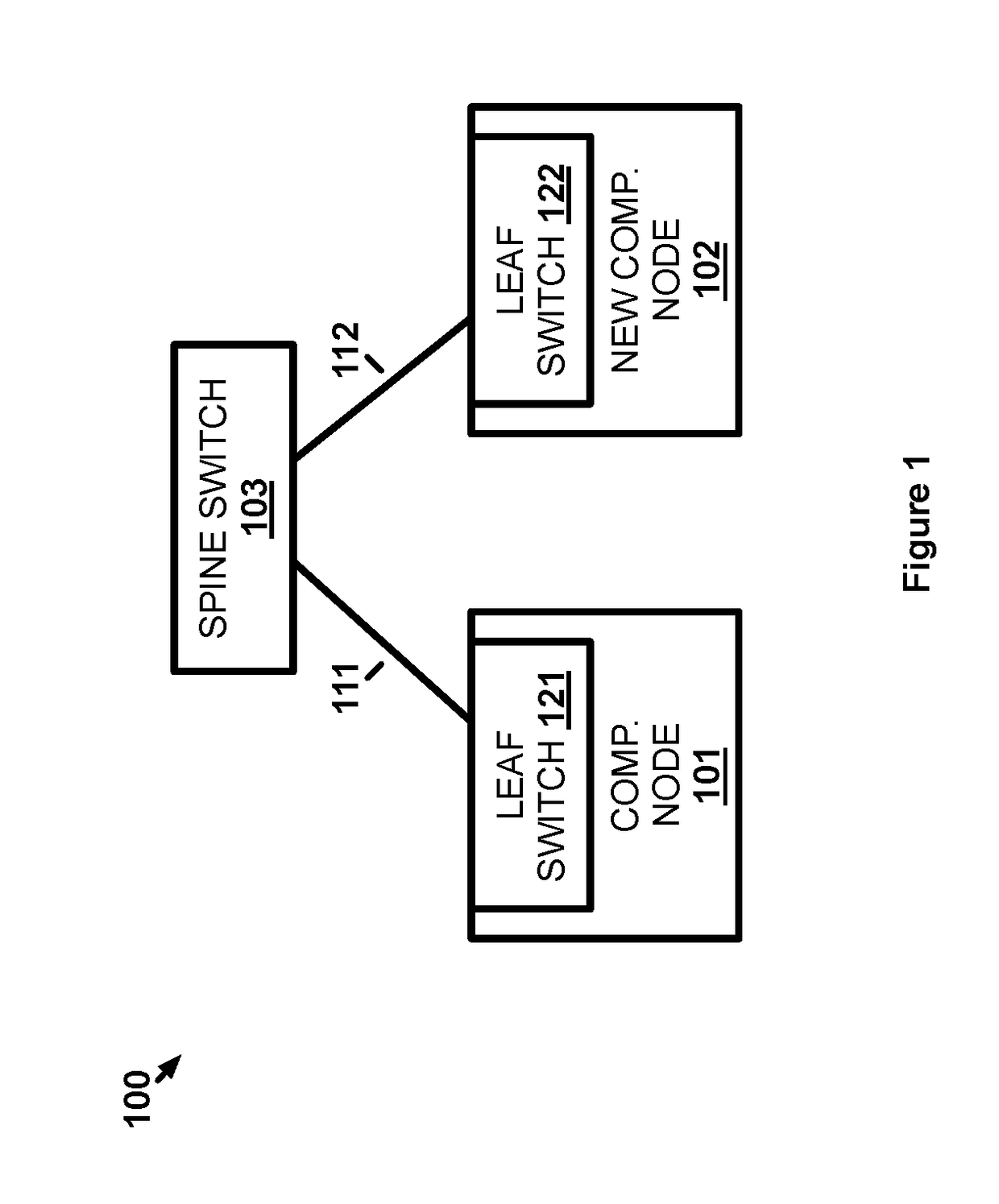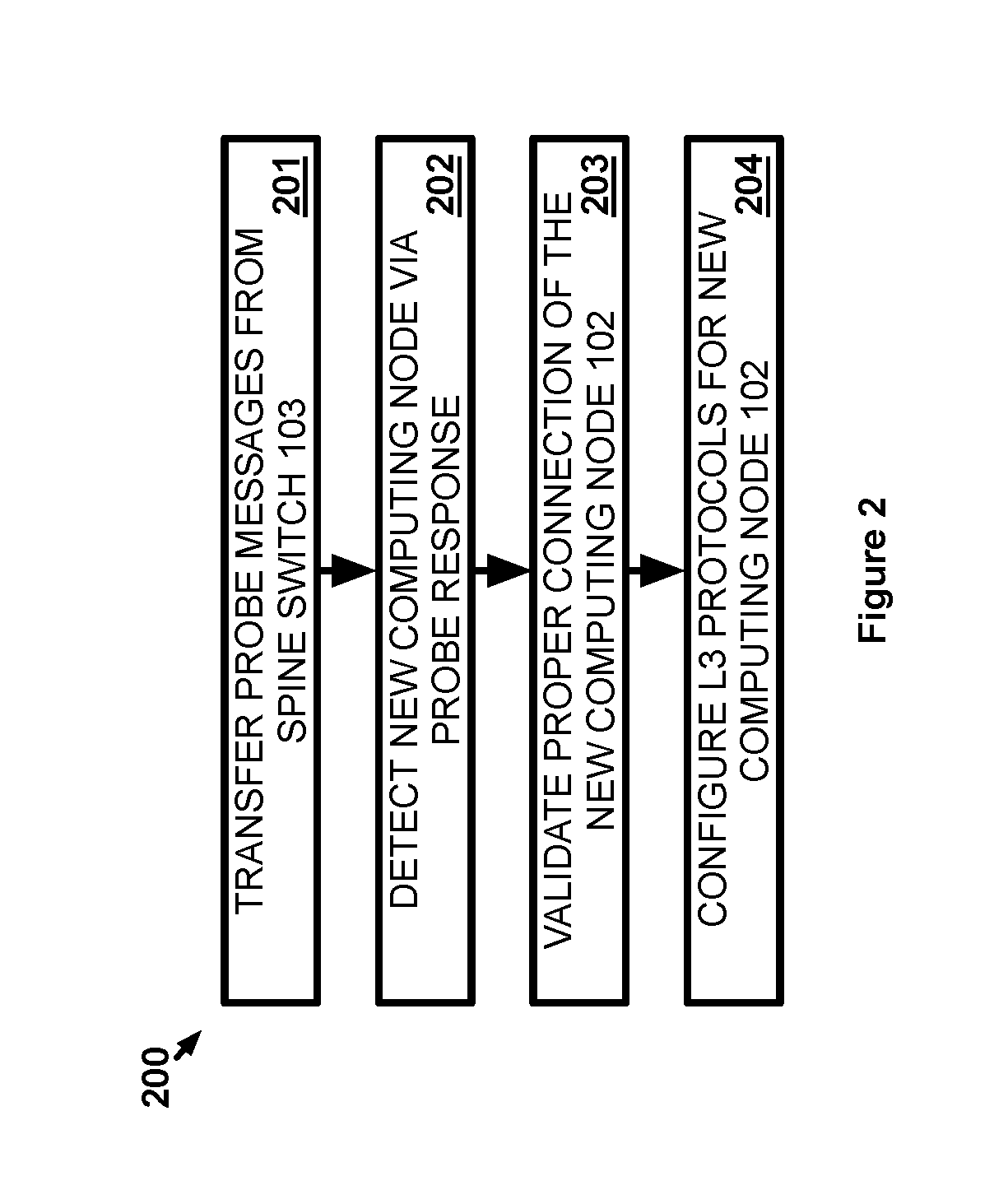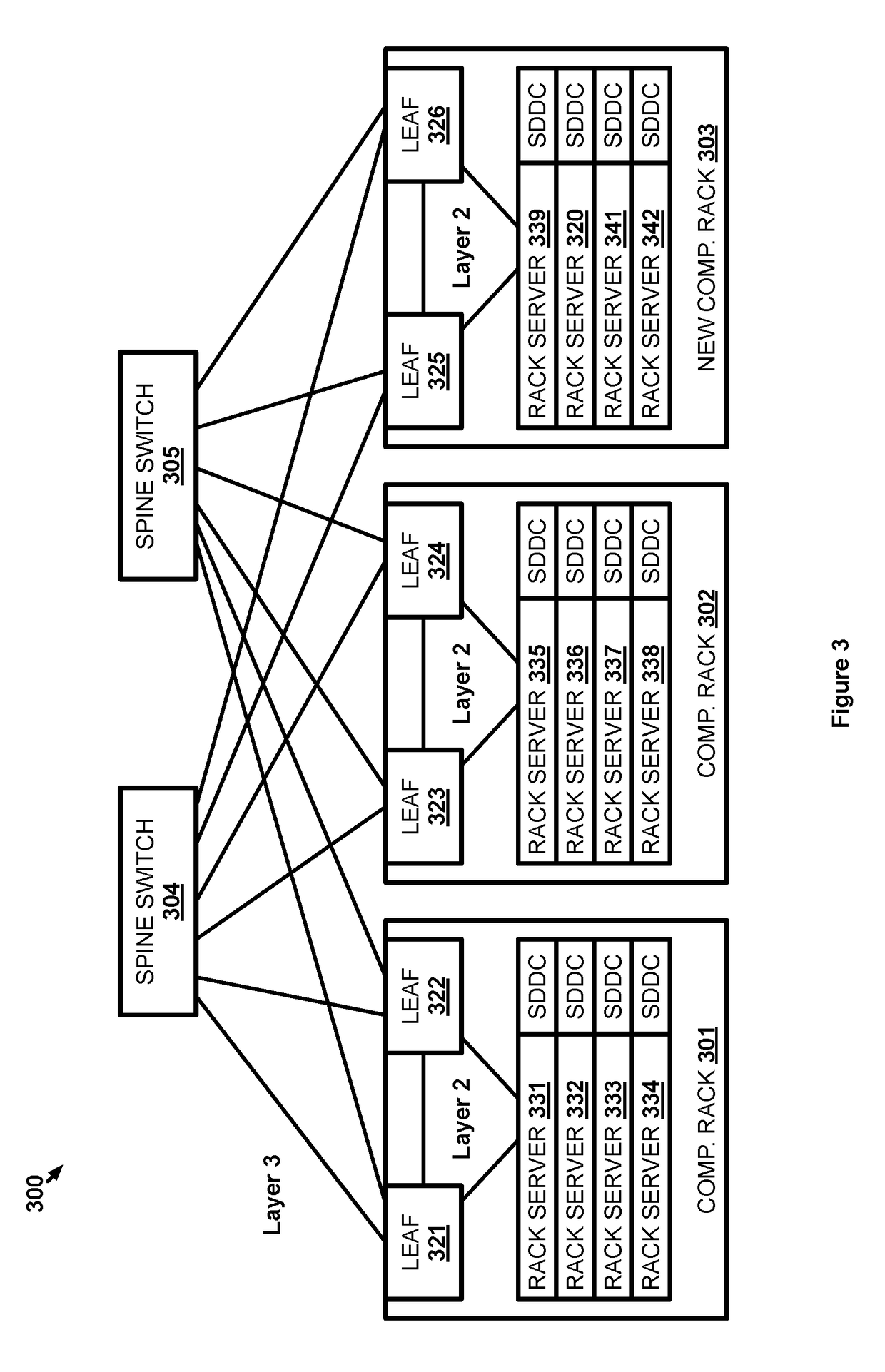Self-expansion of a layer 3 network fabric
a network fabric and layer 3 technology, applied in the field of self-expansion of layer 3 network fabric, can solve the problems of time-consuming and error-prone manual configuration of a new computing node in a leaf-spine network
- Summary
- Abstract
- Description
- Claims
- Application Information
AI Technical Summary
Benefits of technology
Problems solved by technology
Method used
Image
Examples
Embodiment Construction
[0020]The implementations provided herein allow for the self-expansion of a leaf-spine L3 network fabric. The network topology of a leaf-spine network fabric includes L3 spine switches with L3 connections to leaf switches at computing nodes being networked by the leaf-spine network. Communications between the computing nodes are transferred through a spine switch via each computing node's leaf switches. One feature of the leaf-spine network topology is that communications between any two computing nodes need only traverse one of the spine switches in transit. The leaf-spine network topology therefore allows for the delay and latency for communications between any two computing nodes to be predictable and consistent across the entire leaf-spine network. With that in mind, any newly added computing node to the leaf-spine network must be connected and configured in a manner that conforms to the leaf-spine network topology. If the new computing node does not include the proper physical ...
PUM
 Login to View More
Login to View More Abstract
Description
Claims
Application Information
 Login to View More
Login to View More - R&D
- Intellectual Property
- Life Sciences
- Materials
- Tech Scout
- Unparalleled Data Quality
- Higher Quality Content
- 60% Fewer Hallucinations
Browse by: Latest US Patents, China's latest patents, Technical Efficacy Thesaurus, Application Domain, Technology Topic, Popular Technical Reports.
© 2025 PatSnap. All rights reserved.Legal|Privacy policy|Modern Slavery Act Transparency Statement|Sitemap|About US| Contact US: help@patsnap.com



